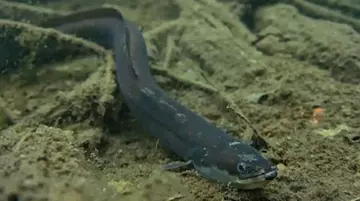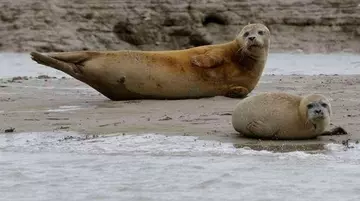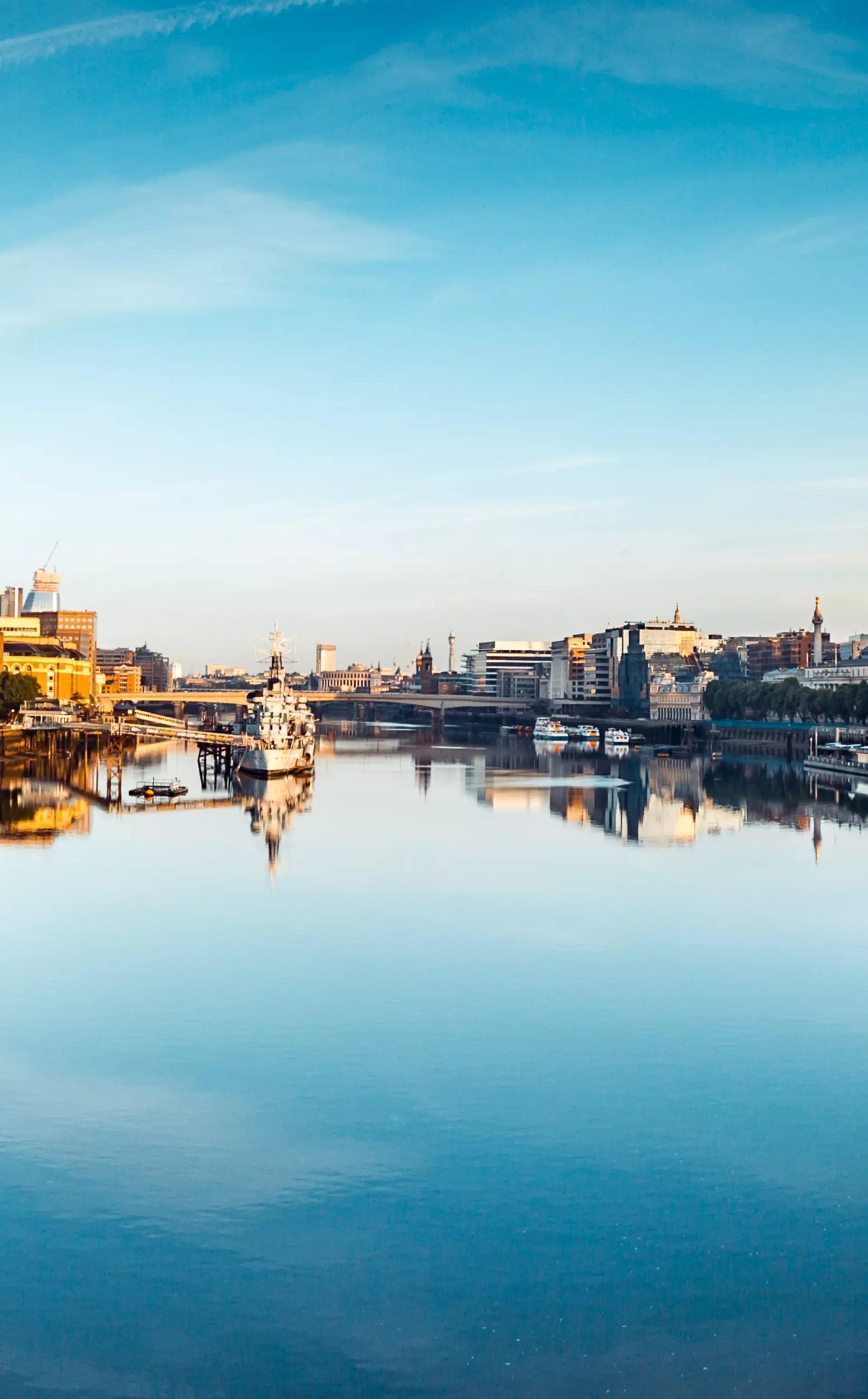
There are lots of surprising animals in the Thames.
ZSL has been working to preserve wildlife in the tidal Thames and its tributaries for over 20 years and has had the privilege of working directly with both the charismatic species that inhabit it and the people living on its banks.
Although considered biologically dead in the 1950s, through much hard work from conservation organisations, companies and the government, sewerage systems have been rebuilt and developed and the Thames is now teaming with life.
We’ve compiled a few fun facts about some of the amazing species in the Thames:
European Eel
An iconic historical species for east London, this species is now considered critically endangered due to a combination of habitat destruction, barriers (such as weirs) to their migration and overfishing. European eels are snake-like, migratory fish with an elongated body and slimy skin and they take part in one of the world's greatest unseen migrations.
European eels are born in the Sargasso Sea, just off the United States of America, and swim over 5,000 km to European estuaries, such as the Thames. They migrate up these estuaries and remain there for up to 20 years, living in the freshwater tributaries feeding and maturing, until amazingly they migrate all the way back to the Sargasso Sea to have their own young.
ZSL have been working to both help and record eel populations in the Thames river system over many years. You can read more about this work or watch a short animation about their incredible migration.

Short snouted Seahorse
Many people think of seahorses as tropical species, but they also live around the British coastline and incredibly have been found living in and around the Thames. Several juvenile individuals have been reported in the outer tidal Thames and Thames estuary, and because seahorses tend to have small home ranges, we believe they live here all year around.
Seahorses are bizarre and wonderful animals in many ways, with prehensile tails (like our thumbs) so they can hold on to seagrass, not to be swept away in the tides, and the males of the species become pregnant and give birth to their young – the only known species in the animal kingdom to do this!
Fish in the Thames
There is an incredible 125 species of fish that have been found living amongst the animals in the Thames, and this includes species of conservation and commercial importance. Some of these species you might recognise such as seabass, Dover sole and flounder and others, such as the cucumber smelling smelt, may be less familiar.
The Thames is especially important as a nursery ground for many of these species as its nutrient rich brown waters provide lots of food for these species to grow and develop. In fact the Thames is one of only five known nursery grounds for Dover Sole in the UK. Fascinatingly all flatfish undergo an incredible change in shape throughout their early development. Initially they are born resembling round fish such as seabass, with eyes on either side of the head, but as they mature their bodies gradually flatten and one eye migrates around the front of their head to the same side as the other.
ZSL has been conducting conservation studies on fish in the Thames over recent years. If interested, you can learn more about this work in the Thames.
Seals in the Thames
We have two species that call the Thames home, harbour and grey seals. With a combined Greater Thames Estuary population of approximately 4000 individuals, most live on sandbanks and coastal creeks in the outer estuary, but some have amazingly been sighted following fish as far up as Richmond! Both species are considered top predators in the UK, eating a variety of fish and crustaceans, with grey seals remarkably travelling distances of up to 100km to look for food.
Harbour seals have been recorded using the Thames as an important breeding ground, with 138 new pups recorded during the 2018 season alone. Harbour seal new-borns have the incredible ability to swim and dive within hours of birth, making the banks exposed during passing tides along the Thames ideal pupping sites.
You can read more about our Marine Mammal Conservation Work. If you would like to get involved, become a sofa scientist to help our conservation scientists better understand how seals use popular haul-out sites in the Thames Estuary. You can also log any marine mammal sightings you make across the Thames estuary.

Sharks in the Thames
When you think of all the animals in the Thames that call the Estuary home, you might not immediately think of sharks!
Surprisingly however, around fives species from the shark family are thought to live in the Thames, and both Tope and Starry Smoothhound are thought to use the Greater Thames Estuary as a nursery ground. Adult sharks are thought to like pupping in shallow bays and estuaries and as such the Thames provides an ideal habitat, with young sharks remaining in these nursery ground for up to two years.
Tope sharks only give birth to pups every two to three years and it has recently been found that they will return to the same nursery ground as part of their reproductive cycle. Remarkably, Tope have an estimated lifespan of 60 years and are highly migratory animals, with some individuals tagged in UK waters having been recorded up to an incredible 2500km away.
The Starry Smoothhound shark is one of the only species of smoothhound to be found in UK waters, it gets it's name from the 'starry' looking bright white spots that run along their back.
Read more about ZSL's current pilot shark project to better understand these amazing animals.
Oysters
Wild native oyster beds are probably one of the most endangered marine habitats across Europe. Compared to historic levels, native oyster populations in the UK have been reduced by over 95%. We do however still have a population living in the outer Thames estuary. Oysters provide an essential source of food and habitat, in the form of reefs, for aquatic life, especially young fish and are instrumental in cleaning the water where they live.
Furthermore, these quirky creatures have a bizarre mating ritual as they alternate between being male and female throughout their breeding season. Oysters are most famously known for producing pearls. Unfortunately for Londoners the pearls produced by native oysters are dull and as such have no financial value!
Learn more about the current native oyster conservation work being carried out by ZSL.
